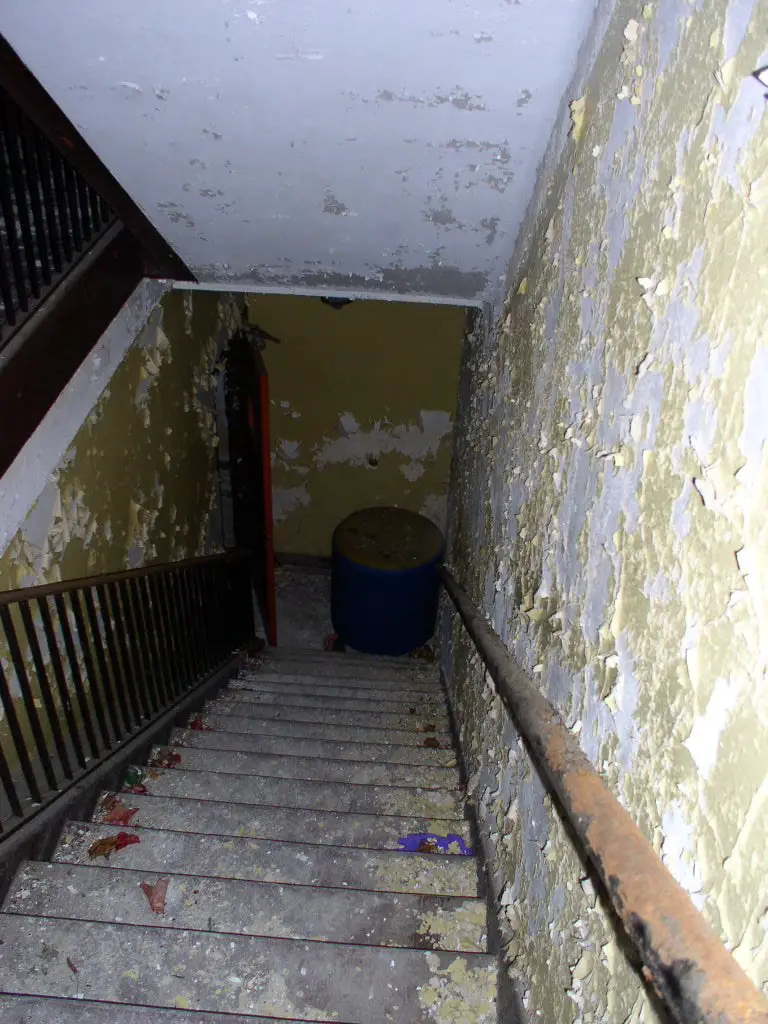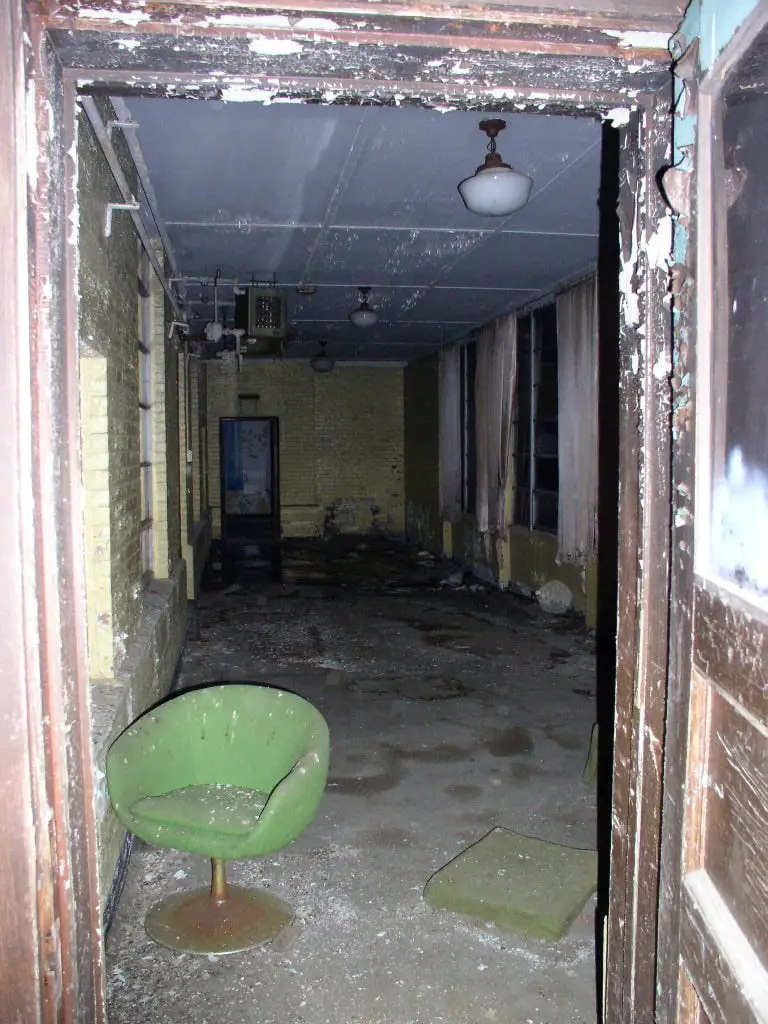Establishment and Early Years
Nestled at the junction of Connecticut Route 32 and United States Route 44 in Mansfield, Connecticut, the Mansfield Training School and Hospital has a rich history that dates back to 1860.
Opening its doors in Lakeville as the Connecticut School for Imbeciles, the institution changed its name to the Connecticut Training School for the Feebleminded at Lakeville in 1915. 1917 it combined with the Connecticut Colony for Epileptics, established in Mansfield in 1910, adopting its current name.
When the merged institution opened its doors in 1917, it housed 402 students. The resident population grew to 1,070 by 1932, reflecting the increasing demand for its services. The Spanish Influenza epidemic of 1918/1919 hit the institution hard, with around 200 out of 300 patients contracting the Spanish Flu, resulting in 30 deaths.
Architecture and Campus
The Mansfield Training School and Hospital is a 350-acre historic district that showcases architectural styles such as Late 19th and 20th Century Revivals, Greek Revival, and Late Victorian.
The architectural firm Cudworth, Woodworth & Thompson played a significant role in designing most of the contributing buildings built between 1914 and 1930.
The farm that began operating in 1909 was a unique aspect of the campus. This farm supplied the institution with most of its food and provided occupational therapy for people with epilepsy.
Children housed in the institution hand-molded the concrete blocks used to construct barns on the farm property, adding a personal touch to the landscape.

Growth and Challenges
However, the growth was not without its difficulties. The Spanish Influenza epidemic of 1918/1919 severely impacted the institution. Dr. LaMoure and one nurse were left to care for the patients, highlighting the resilience and dedication of the staff during a challenging period.
The institution faced growth and challenges during the Depression and World War II. A surge in the need for the institution’s services led to overcrowding within the facility and extensive waiting lists for those seeking enrollment.
The staffing levels also increased during the 1960s, reflecting changes in philosophies on treating mental disability. By 1969, there were 1,609 residents and 875 full-time staff.

Changes and Innovations
The decades of 1970s and 1980s were a time of remarkable transformation and advancement for the Mansfield Training School and Hospital.
Many residents were relocated from dormitories to on-campus cottages or group homes around the state. This transition reflected a more humane and compassionate approach to mental disability care.
By 1976, the resident population had dropped to 1,106, and by 1991, only 141 people remained as residents. These changes indicated a broader societal shift towards community integration and away from institutionalization.

Controversies and Closure
Despite its many achievements, the institution was not without controversy. Allegations of abuse and mistreatment surfaced, with cases like Glady Burr’s lawsuit in 1979 drawing attention to the darker aspects of the institution.
The lawsuit alleged unconstitutional treatment of patients, including subpar living conditions and care quality.
In 1993, Mansfield Training School was closed after numerous lawsuits and investigations, and its patients were sent to outpatient facilities and other institutions. This closure marked the end of an era and the beginning of a new approach to treating disabled people.

Mansfield Training School and Hospital: Aftermath and Legacy
The closure of the Mansfield Training School and Hospital led to the demolition of some dilapidated buildings. In contrast, the Bergin Correctional Institution and the University of Connecticut repurposed others.
In an intriguing twist, the caretaker’s residence at the Mansfield Training School and Hospital was spotlighted on the SyFy channel’s Paranormal Witness in 2011, identified as a site of suspected supernatural occurrences.
Local rumors about hauntings and other patient abuse add to the place’s mystique. The institution’s legacy continues to be a subject of interest and reflection, representing a complex tapestry of history, care, controversy, and community.

Conclusion
The Mansfield Training School and Hospital is a testament to the evolving understanding and treatment of mental disabilities.
From its establishment in 1860 to its closure in 1993, it has played a vital role in the lives of many residents and staff. Its architectural beauty, innovative approaches, and controversies that led to its closure offer valuable insights into a significant chapter of Connecticut’s history.
The echoes of the past still resonate in the buildings and landscapes of the Mansfield Training School and Hospital. For those who live or have lived in the area, it remains a symbol of progress and reflection. This place inspires curiosity, nostalgia, and a sense of community.

MY UNCLE STEVE VINCI SPENT ALMOST HIS WHOLE LIFE AT MANSFIELD HOME FOR THE FEEBLEMINDED. I WANT TO RESEARCH MY UNCLE AND FIND OUT HIW HE WAS TREATED. HE DIED I BELIEVE IN 1978, HE WAS BORN 1919 OR 1920 IN COLORADO TO MY GRANDMA CONCETTA FERRERI VINCI ABD MY GRANDFATHER LUMINATO VINCI. MY GRANDMA , MY MOM TOLD ME, WOULD GO UP TO SEE HIM AND COME BACK AND SPEND AT LEAST THREE DAYS WITH A MIGRAINE. THANK YOU TONI ELLEX
Thank you, Toni, for sharing your family’s story. Researching your Uncle Steve’s life at Mansfield Home is a significant undertaking. It’s important to uncover and understand our families’ histories, and I wish you the best in your search for information.